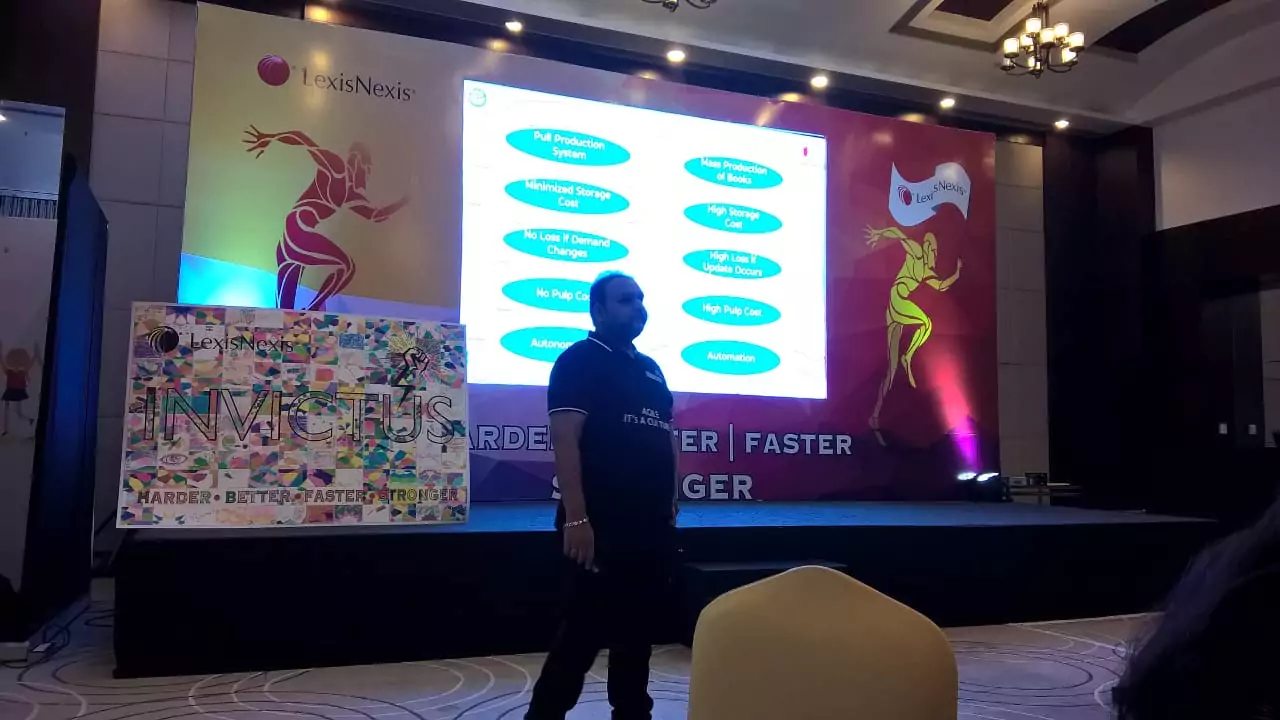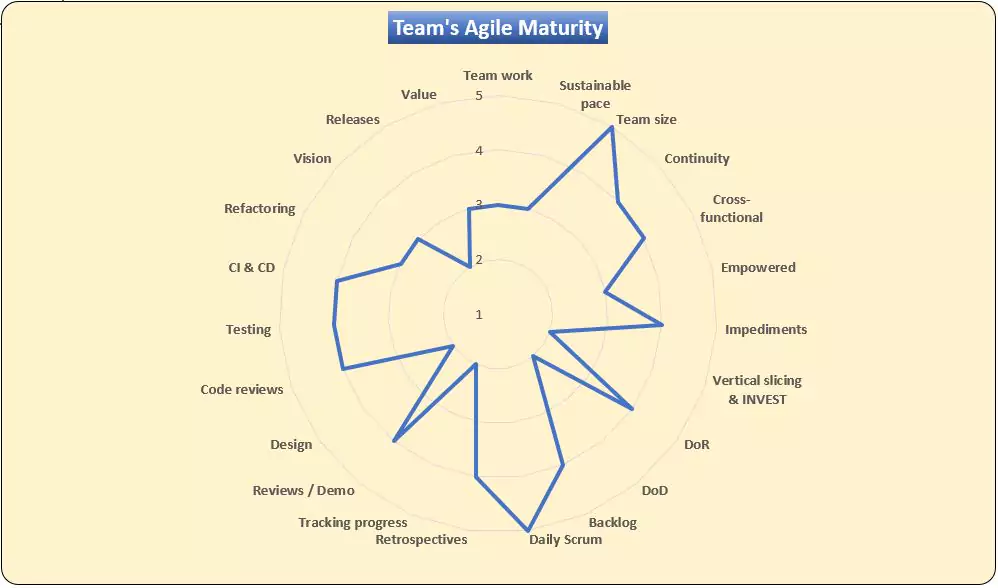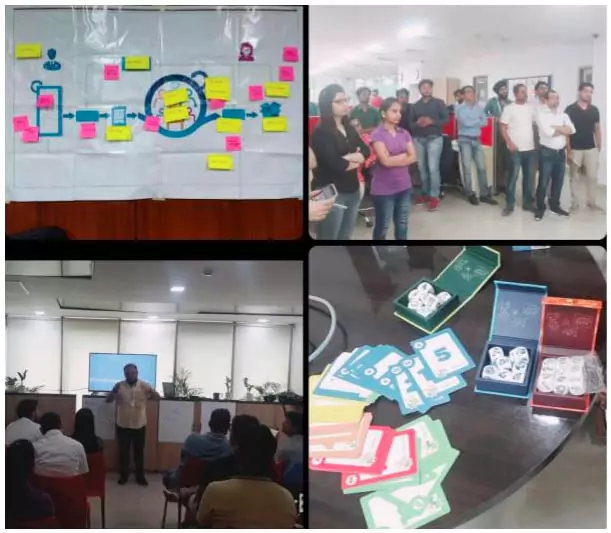
Related Articles

IT Outsourcing
RSK BSL Tech Team
May 4, 2025
|
|

Mobile Application Development
RSK BSL Tech Team
April 30, 2025
|
|

Software Development
RSK BSL Tech Team
April 27, 2025
|
|

Hire resources
RSK BSL Tech Team
April 24, 2025
|
|

Software Development
Praveen Joshi
April 20, 2025
|
|

Artificial Intelligence
Praveen Joshi
April 17, 2025
|
|

Pen Testing
Praveen Joshi
April 15, 2025
|
|

AI Tech Solutions
RSK BSL Tech Team
April 14, 2025
|
|

Software Development
RSK BSL Tech Team
April 9, 2025
|
|

Pen Testing
RSK BSL Tech Team
April 7, 2025
|
|

Software Development
RSK BSL Tech Team
April 3, 2025
|
|

Cloud Application
RSK BSL Tech Team
March 31, 2025
|
|

Pen Testing
Praveen Joshi
March 27, 2025
|
|

Software Development
RSK BSL Tech Team
March 25, 2025
|
|

Software Development
RSK BSL Tech Team
March 20, 2025
|
|

Software Development
RSK BSL Tech Team
March 18, 2025
|
The Journey is more beautiful than The Destination. So is The Agile Transformation Journey!
“…Congratulations! Management is ready to adopt Agile. Soon, we shall be an Agile Team. We’ll adopt the Agile way of work, stop traditional practices & become a high performing team …”
These talks, from a team, are quite exciting as they are about to start The Agile Transformation Journey. But is it as simple as it sounds? Is this Transformation quite linear? Are there any challenges to achieve this change?
I believe, CHANGE always comes from CHALLENGE; You need to attack the core of CHALLENGE i.e. LLE. The same is true for The Agile Journey.
As an Agile Coach, I helped my team with their Agile Transformation journey using these 3 steps:
L – Losing
L – Love
E – Educate
Step – 1: Let the Team realize what they are ‘Losing’ now
Until the team understands what they are losing now & why Agile needed, the adoption may not be taken seriously, and the efforts may not come from bottom of the heart. So firstly, I will discuss the current problems & reasons why these problems occur. In the past, I did this by having sessions with the team. The most common problems found in teams were:
- Missing continuous & timely deliveries – mainly due to either under-estimating the work, or scope change during the development.
- Pressure to make changes to the product – The stakeholder wants the changes to the product at the late stages of development which can be difficult.
- Unresolved dependencies & no coordination with stakeholders – The questions raised to stakeholders, remain unanswered for a long period of time & the team are not able to work, resulting in delays.
- Fear in releasing the product – Will the product work or not in customer’s environment? The release of the product is done at a late stage, leaving uncertainties regarding the success of the product.
- Stakeholders never satisfied – This is an interesting point. Many teams expressed no matter how big efforts made, there is always criticism & dissatisfaction from the stakeholders.
- No time to learn new technologies – Project deadlines are often so narrow; they never get time to explore new technologies & new ways of doing things.
- Lack of Transparency – Throughout all the sessions held, everyone felt that this was a big issue as no one knows how others in the team are adding value to the product.
- Being treated like Machines & Psychological unsafe environment – Many teams believe they don’t have time to themselves, leading to questions as to why so much time is required to do a particular task. No leave can therefore be availed due to deadlines. Due to this unnecessary questioning and conflict, people just follow commands rather than putting their points across to the team.
By discussing these problems, I gained a personal bond with the team, being someone who understands their issues. This gave them a ray of hope that these issues can be solved. The objective of the first step was to win the trust of team, by taking the role of someone who is there to protect them.
Here, it is important to understand that an Agile Coach or a Scrum Master are enablers. It is the team who will collectively make effort to bring about change, and this can only be done when the team has reason, hope and willingness to do so.
Step – 2: Make people ‘Love’ Agile
The second step is to let the team know how Agile can solve the problems they are currently facing. We need to present Agile in a way that they will be able to apply what they have learnt to their current problems. However, if we just reiterate Manifesto & Principles, people may lose interest & find it too “textbook”. I wanted them to Love Agile and so I took the below initiatives:
A) Use Interesting Examples:
- Demonetisation – On November 16th, Demonetisation was announced. The country saw currency issues for a few months. If I was developing an ecommerce website with Indian culture using the option of cash-on-delivery, I may not be able to conduct business at that time. In Agile, I can add other payment options to my website whenever I want. This showed how Paytm blossomed during this time.
- http://www.scrumyourwedding.com/ – wedding-planners using scrum
- Puducherry Model of Governance and how it is using Agile for good governance.
- Comparisons – Orkut vs FB, BB vs Samsung, Kodak vs Nikon – When one begins to grow, the other ultimately failed.
B) Concept Clarity using Games & Story Telling
- Flip Coin Game – light-weight game to demonstrate iterative delivery concept.
- Calligraphy Game – a game to focus on completing things.
- Ham-n-eggs – a story to showcase the differences between involvement, commitment and relation to Agile Teams.
- And many more, as per the context…
C) Touching the Nerves:
Above #A & #B helped the team to understand the soul of Agile and by this point, they started talking Agile. Now, it was time to showcase how Agile can solve their problems discussed previously in the “Losing” section. We had many Q&A sessions on how Agile can help us:

- Maintain Transparency by having a Kanban board in order to see the journey of the product.
- Having a Release Schedule will help in continuous & timely deliveries. Eventually, we achieved this.
- Highlight how can we facilitate changes in the product. Showcase the importance of scrum events (Planning & Review) and refinement meetings.
- How Agile practices focus on Coordination & collaboration with stakeholders. It is easier to resolve any dependencies.
- Agile explains the reasons as to why stakeholders are often not satisfied, even if the product follows the signed contract. The reason is that stakeholder expectations change with time and so we need to make changes to the product accordingly.
- I personally felt most of the members complained about estimations. They feel they do not get enough time to do their task, or they are asked to cut-down the estimates. To resolve this issue, I helped them understand Estimates, Velocity and Story Point through storytelling.
- Finally, we discussed Scrum Values which motivated the team towards Agile and the team looked confident, hopeful and dedicated to Agile after these discussions.
Step -3: ‘Educate’ people to Execute
The last step to adopting Agile is educating and helping the teams to implement practices. It is a Bi-Dimensional approach which focuses on – Doing Agile (adopt practices) and Being Agile (a change of mindset by cultivating values & principles).
I believe we can’t avoid any of these. ‘Doing’ is important to maintain the deliveries and ‘Being’ is important to transform the culture and mindset of the team. Our Agile adoption efforts included both. I trained, coached, and taught the teams by organizing dedicated interactive sessions.

- Doing Agile Workshops – Explain Framework, Events, Role & Responsibilities, best practices in detail.
- Being Agile Workshops – Explain Scrum Values, Principles, Empiricism, Transparency, Psychological Safety, Transforming the culture and Earning Trust.
- Setup Agile CoE & CoP – Setup dedicated environment & spaces where people can Talk Agile, Practice Agile, discuss their problems and Learn.
- Agile Maturity Assessment – Prepare Agile Maturity Assessment which can be taken on a regular basis and to highlight the improvement areas in the team.

The idea is to make the team understand and execute practices and at the same time develop psychologies and values in their mind.
Below are the few moments, the teams and I at RSK-BSL spent:

Conclusion
During my journey of helping teams in their Agile Transformation, I realized these 3 steps are the core to success. It is not the journey from Traditional to Agile, rather it is the journey of Earning Trust and Cultivating Team Spirit which can be achieved by practising Values, understanding Principles & executing practices.
Once Netflix CEO said –
“Do not tolerate brilliant jerk. The cost of teamwork is too high.”
As a Scrum Master, I helped many teams in their Agile journey, and I believe:
“A SM is successful only when her/his team is in a condition where SM is not required.”
And so my journey goes on…
Praveen Joshi
Praveen is a seasoned IT Solutions Leader and Director at RSK Business Solutions, a technology-driven IT Consulting Company that specializes in Bespoke Software Development, Agile Consulting, Mobile App Development, Smart Sourcing, and much more. For the last 17 years, he has been delivering quality custom IT solutions that help businesses achieve their goals.

 Share
Share Post
Post Tweet
Tweet Copy
Copy


